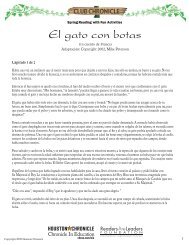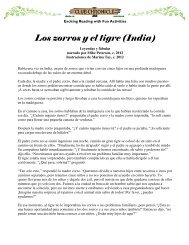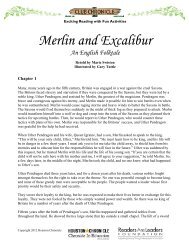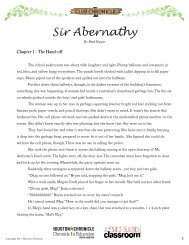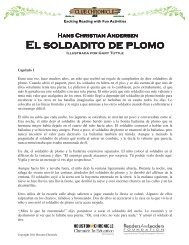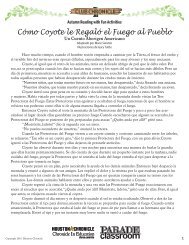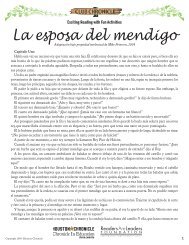Download
Download
Download
Create successful ePaper yourself
Turn your PDF publications into a flip-book with our unique Google optimized e-Paper software.
A Diversity of SpeciesPeople know so much about the Earth,and we learn more every single day.But there's so much we have yet tofully understand, like exactly howmany species of plants and animalsshare our planet with us.Scientists use the word biodiversityto describe the variety of life on Earth,from the tiny microscopic bacteria, towhales, the world's largest animals.So far, scientists have identified 1.5 –1.8 million species (a species is a kindof living thing, plant or animal),including more than 750,000 species ofinsects, 248,800 species of flowers andtrees, 18,800 species of fish, and27,000 species of ocean plants calledalgae. But some scientists think we’veonly found the tip of the iceberg, thatsomewhere between 10 and 100 millionspecies of life can be found on Earth!On Earth Day, people will gatherworldwide to discuss how to preservebiodiversity, to make sure that all theplants and all the animals that currentlylive on Earth stay here forever.Check Out The Newspaper!Learning standard: understanding characteristicsof living things◆ Read through today’s newspaper.Is there a news story about plants oranimals? What is the story about?RedwoodsMonarch ButterflyPandaPolar BearHumpback WhaleFIND & SEEKLook at the pictures of plantsand animals that live here onEarth. Match the picturewith its description andwrite the number on the linebelow the photo. Can youdraw a line from the speciesto the place in the worldwhere it lives? Give it a try!1. A large meat-eaterthat hunts seals and fishin tundra habitats near theArctic circle.2. A large ocean-dwellingmammal that captures largequantities of shrimp-likekrill underwater.3. An Asian mammal thateats only one plant, bamboo.4. A slow-moving plant-eaterthat hangs from trees in theSouth American rainforest.5. The largest trees in theworld, some reachingheights of 200 feet or more.6. A swift-running grassgrazerthat uses whiteand-blackstripes to blendinto its surroundings.7. An nectar-sipping insectthat flies all the way toMexico to spend the winter.ZebraThree-toed SlothANSWER KEY:1. Polar bear, 2.Humpback Whale,3.Panda Bear, 4. Three-toed Sloth,5. Redwoods, 6. Zebra, 7. MonarchButterfly.Extra! Extra! Learn More!1. There are many ways you can helppreserve biodiversity. Your class mightplace some bird feeders outside yourclassroom window to attract and feedbirds. You can even put up bird, batand/or butterfly nesting boxes, availablenow at garden stores.2. Plant a large butterflybush outsideyour classroom window (a gardenstore will know what the plant is).Each year, its nectar-rich blossomswill attract and feed butterflies, andbutterflies are finding it increasinglyhard to find field flowers.3. Learn more about biodiveristy.Contact the World Wildlife Fund andask them about their program,Windows on the Wild.3




